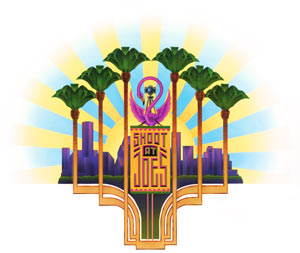This is the sixth in my series I call “did it do it”. In each of my online classes I teach every month with the BPSOP, and also with my “Stretching Your Frame of Mind” workshop I conduct around the planet, I pass out this list of twelve suggestions to create stronger images and take your photos what I refer to as “up a notch”.
Since I’m not one for following rules, I submit these merely as guidelines. Guidelines that I’ve personally been following for most of my forty-six year career in Photography. The more of these guidelines you can include in your photos the better, as it’s worked for me so far. I call this one “did it have a center of interest”.
Since teaching my first workshop in 1984, I’ve looked at and critiqued hundreds of photographs, and a common thread that enviably runs through a vast majority is that they don’t have a center of interest. Something that the viewer can clearly identify with and be able to recognize without aimlessness wondering around the frame looking for something to stop and enjoy; or wonder just what it was that you were shooting.
I can already hear what you’re thinking!!! What about a landscape or an abstract? First of all, a landscape does have a center of interest. It’s the location that’s the subject and what’s interesting. If there’s mountains, then they are the center of interest. If there’s a large body of water, then that’s what the viewer will latch onto. If there’s nothing but “sea, land and air”, then it the way they act and react to one another; the way the photographer arranges them in his composition.
If you’re talking about an abstract, then it’s conceptual and anything the viewer wants can be the center of interest.
For the most part, a photo needs a center of interest to create strength, convey a thought, communicate an idea, make a statement, conjure up an emotion, or to be an anchor in the foreground to provide “layers of interest” and take the viewer to the horizon. It’s the glue that holds the entire composition together. Their can be more than one center of interest, as long as they say the same thing. This falls under one of the six principles of Gestalt I’ve written about for Adorama. This principle is called Similarity.
By the way, a center of interest does not have to be tangible. Intangible or an implied center of interest may come in the form of color, light, and contrast.
Some photographers tell you to “get to the point” by having your center of interest be seen right away. I agree, but with reservations. Sometimes I want the viewer to spend time looking at my photo, so I might pace it somewhere that will be discovered later rather than sooner. This leads me to talk about another of the Principles of Gestalt…figure-Ground where sometimes the center of interest is up for grabs.
The important thing to remember is to make sure your idea is a “Quick read”, as in my tractor photo above.
Visit my new website at: www.joebaraban.com, and be sure to check out my workshop schedule at the top of this blog. Come shoot with me sometime.
JoeB






Hello Joe! I really like this article because I agree photographs need a center of interest! In this shot, to me, the center of interest is the pair of farmers and I would have moved in closer to them. Maybe include some of that front tractor wheel on the left side of the frame and the end of building for the right. People will recognize the tractor wheel, pair of farmers, country store windows, and think two old friends talking and having a good time at the country store. To me the tractor over takes this photo. I do also like ( yes I will admit it lol) that this shot was taken late in the day giving a nice sky and warm tones to this picture. Wish that sign above the porch roof was flat on the side of the building so could see it. It just casts a shadow off to the left without being able to see any of it. Nice post Joe!
Gary,
The center of intere4st was not the people, and moving in on the farmers would not have been a very good idea. You see, it was an ad for the company that manufactured the tractor, and they would not have been happy!!! That’s why the tractor is centered and therefore the first thing the viewer will see. The store and the farmers is ambiance.
Remember that my forty-six year career was in corporate and advertising photography, so there’s a “method to the madness” behind most of the photos you see of mine.
Thanks for the comment and your thoughts,
JoeB
Hi Joe,
I love this photo. This is the first time I see such a strong usage of shape in your photography.
To me the main center of interest of this photo is the face shape of the building. Everything else gets noticed after it, including the tractor… which is a great example of the Gestalt theory in photography that you’ve just explained.
Very cool shot, and really different from what you usually prefer to show (VP and strong perspective usage) which of course is awesome too!
Valeriano,
It’s important to always have your ‘Artist Palette’ “at the ready”. That doesn’t mean that you have to have the elements in all your photos. I rely a lot on the elements when I’m teaching to show you that they’re there for you, and you’re images will move up a notch when you use them.
You’re right in that I like powerful images that have a lot of Tension, sometimes “in your face”, with lots of depth in them. I also like photos that come across as more two-dimensional. It all depends on what I want to say, and when I want to say it. Btw, the shot was an advertisement for the people that manufacture the tractor. I wanted a non-action feel. One with the “good old boy” flavor and down home and rural attitude. I felt the best way to achieve it was a look that the people that were going to buy this tractor would/could identify with.
JoeB